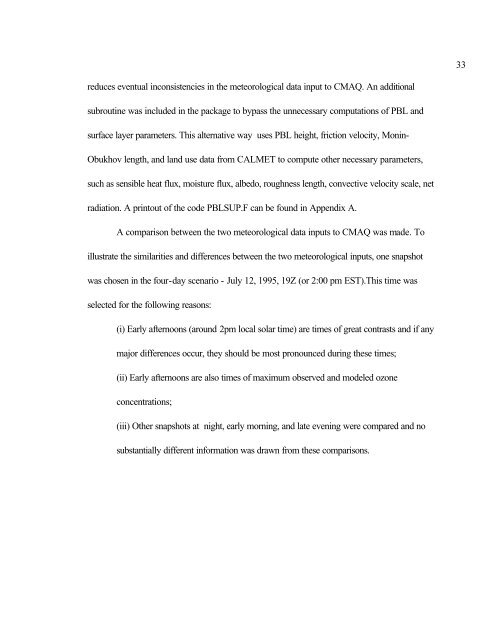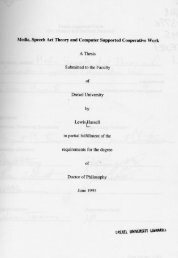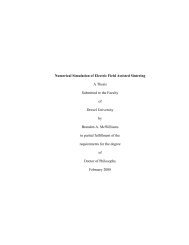Alternative small scale meteorology input to a chemical transport ...
Alternative small scale meteorology input to a chemical transport ...
Alternative small scale meteorology input to a chemical transport ...
You also want an ePaper? Increase the reach of your titles
YUMPU automatically turns print PDFs into web optimized ePapers that Google loves.
educes eventual inconsistencies in the meteorological data <strong>input</strong> <strong>to</strong> CMAQ. An additional<br />
subroutine was included in the package <strong>to</strong> bypass the unnecessary computations of PBL and<br />
surface layer parameters. This alternative way uses PBL height, friction velocity, Monin-<br />
Obukhov length, and land use data from CALMET <strong>to</strong> compute other necessary parameters,<br />
such as sensible heat flux, moisture flux, albedo, roughness length, convective velocity <strong>scale</strong>, net<br />
radiation. A prin<strong>to</strong>ut of the code PBLSUP.F can be found in Appendix A.<br />
A comparison between the two meteorological data <strong>input</strong>s <strong>to</strong> CMAQ was made. To<br />
illustrate the similarities and differences between the two meteorological <strong>input</strong>s, one snapshot<br />
was chosen in the four-day scenario - July 12, 1995, 19Z (or 2:00 pm EST).This time was<br />
selected for the following reasons:<br />
(i) Early afternoons (around 2pm local solar time) are times of great contrasts and if any<br />
major differences occur, they should be most pronounced during these times;<br />
(ii) Early afternoons are also times of maximum observed and modeled ozone<br />
concentrations;<br />
(iii) Other snapshots at night, early morning, and late evening were compared and no<br />
substantially different information was drawn from these comparisons.<br />
33






